The best cooking oils contain healthier fats, and EVOO wins best in show
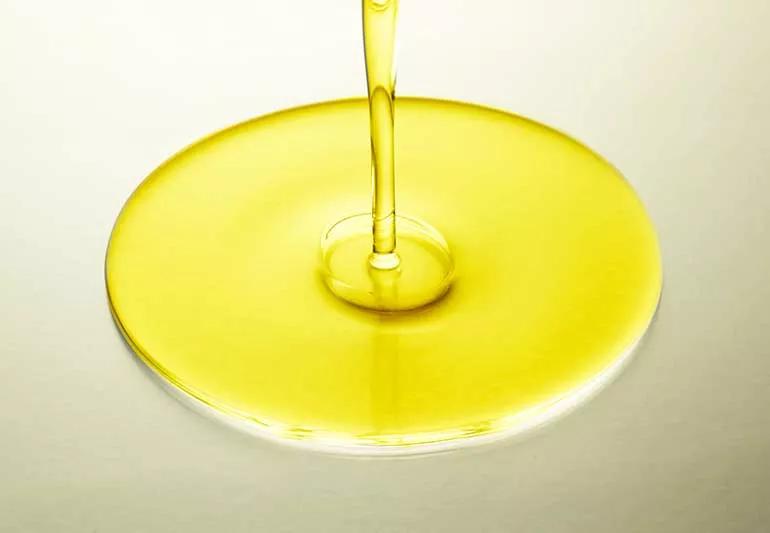
Cooking with oils is a big part of many recipes and adds flavor to your dishes. But navigating which oils are best — or worst — for your health and your recipe can be a challenge. There are a lot of options, after all.
Advertisement
Cleveland Clinic is a non-profit academic medical center. Advertising on our site helps support our mission. We do not endorse non-Cleveland Clinic products or services. Policy
Confused about which oils are healthy and which aren’t? Which to use for searing vs. stir-frying, baking vs. sautéing?
You’re not alone!
Registered dietitian Julia Zumpano, RD, LD, helps break it all down by explaining how to choose the best oil to get the right taste and the most benefits for your health.
Before we start, it’s helpful to understand what oil is and what makes one oil healthier than another.
You may know that oil is made up of fat. And while many diets suggest cutting down on fats (rightfully), the truth is that some fats are better for you than others. This means that the kinds of fats in your oil are what make one healthier than another.
These are the fats to look out for:
“Unhealthy fats raise your LDL (bad) cholesterol levels, leaving you at a higher risk for heart disease and stroke,” Zumpano explains.
Advertisement
Other fats are healthier. They lower your LDL (bad) cholesterol and raise your HDL (good) cholesterol. But Zumpano reminds us that too much of any fat isn’t good for your health, so even these better-for-you fats shouldn’t be consumed excessively.
The best heart-healthy cooking oils are ones that are lower in saturated fats. But it doesn’t end there.
“When you’re choosing an oil for cooking or baking, you want to think about its health implications, of course, but also the way the oil reacts to heat,” Zumpano notes. “Some oils are better suited for higher heats, some for lower heat, and some shouldn’t be heated at all.”
The difference is the smoke point. That’s the temperature that causes oil to start smoking, which produces toxic fumes and free radicals. If your oil starts smoking in your pan, you should toss it out and start again to avoid unhealthy byproducts.
Oils with higher smoke points can be used at higher heats. Generally, the more refined the oil, the higher the smoke point.
Different oils also can bring different flavors to your meal. That’s a two-edged sword. The right flavors enhance your meal or, in some cases, make for an inedible disaster. (We’ve all been there!)
These cooking oils have a very high smoke point, meaning they can take a lot of heat before they start smoking. That makes them well-suited to cooking at higher temperatures.
| Oil | Saturated fat content | What to know |
|---|---|---|
| Almond | 7% | Has a distinctive nutty flavor. |
| Hazelnut | 7% | Brings a bold, strong flavor. |
| Sunflower | 14% | High-oleic versions are higher in healthy monounsaturated fat. |
| “Light” or refined olive oil | 14% | “Light” refers to color. The more refined the olive oil, the better its use as an all-purpose cooking oil. |
| Avocado | 17% | Known for its sweet aroma. |
| Palm | 52% | Not recommended as a healthy cooking choice. |
| Oil | ||
| Almond | ||
| Saturated fat content | ||
| 7% | ||
| What to know | ||
| Has a distinctive nutty flavor. | ||
| Hazelnut | ||
| Saturated fat content | ||
| 7% | ||
| What to know | ||
| Brings a bold, strong flavor. | ||
| Sunflower | ||
| Saturated fat content | ||
| 14% | ||
| What to know | ||
| High-oleic versions are higher in healthy monounsaturated fat. | ||
| “Light” or refined olive oil | ||
| Saturated fat content | ||
| 14% | ||
| What to know | ||
| “Light” refers to color. The more refined the olive oil, the better its use as an all-purpose cooking oil. | ||
| Avocado | ||
| Saturated fat content | ||
| 17% | ||
| What to know | ||
| Known for its sweet aroma. | ||
| Palm | ||
| Saturated fat content | ||
| 52% | ||
| What to know | ||
| Not recommended as a healthy cooking choice. |
Remember that just because you use a healthier oil doesn’t make cooking methods like deep frying or pan frying automatically “healthy.” Zumpano says that frying uses a lot of oil, which can negate the healthy qualities of any oil. For a healthier alternative to deep frying, consider air frying.
These cooking oils have a medium-high smoke point, making them good choices for use in the oven or in a stir-fry.
| Oil | Saturated fat content | What to know |
|---|---|---|
| Canola | 7% | High omega-6 fatty acids, which can be unhealthy when consumed in excess. Low in the healthy omega-3 fatty acid. |
| Grapeseed | 10% | High omega-6 fatty acids, which can be unhealthy when consumed in excess. |
| Macadamia nut | 13% | Known for having a bold flavor. |
| Light virgin olive oil | 14% | A top-choice oil. |
| Peanut | 18% | Delicious in stir-fry. |
| Oil | ||
| Canola | ||
| Saturated fat content | ||
| 7% | ||
| What to know | ||
| High omega-6 fatty acids, which can be unhealthy when consumed in excess. Low in the healthy omega-3 fatty acid. | ||
| Grapeseed | ||
| Saturated fat content | ||
| 10% | ||
| What to know | ||
| High omega-6 fatty acids, which can be unhealthy when consumed in excess. | ||
| Macadamia nut | ||
| Saturated fat content | ||
| 13% | ||
| What to know | ||
| Known for having a bold flavor. | ||
| Light virgin olive oil | ||
| Saturated fat content | ||
| 14% | ||
| What to know | ||
| A top-choice oil. | ||
| Peanut | ||
| Saturated fat content | ||
| 18% | ||
| What to know | ||
| Delicious in stir-fry. |
These cooking oils have a medium smoke point, making them good choices for dishes that don’t require high heat.
| Oil | Saturated fat content | What to know |
|---|---|---|
| Hemp | 10% | Good source of healthy omega-3 fatty acids. Keep refrigerated. |
| Corn | 13% | High omega-6 fatty acids, which can be unhealthy when consumed in excess. |
| Pumpkin seed | 15% | Contains alpha-linolenic acid, a form of healthy omega-3 fatty acids. |
| Sesame | 15% | Has a rich, nutty flavor. Keep refrigerated. |
| Soybean | 15% | High omega-6 fatty acids, which can be unhealthy when consumed in excess. |
| Virgin coconut | 92% | Also contains lauric acid, which raises good and bad cholesterol levels. Use in moderation. |
| Oil | ||
| Hemp | ||
| Saturated fat content | ||
| 10% | ||
| What to know | ||
| Good source of healthy omega-3 fatty acids. Keep refrigerated. | ||
| Corn | ||
| Saturated fat content | ||
| 13% | ||
| What to know | ||
| High omega-6 fatty acids, which can be unhealthy when consumed in excess. | ||
| Pumpkin seed | ||
| Saturated fat content | ||
| 15% | ||
| What to know | ||
| Contains alpha-linolenic acid, a form of healthy omega-3 fatty acids. | ||
| Sesame | ||
| Saturated fat content | ||
| 15% | ||
| What to know | ||
| Has a rich, nutty flavor. Keep refrigerated. | ||
| Soybean | ||
| Saturated fat content | ||
| 15% | ||
| What to know | ||
| High omega-6 fatty acids, which can be unhealthy when consumed in excess. | ||
| Virgin coconut | ||
| Saturated fat content | ||
| 92% | ||
| What to know | ||
| Also contains lauric acid, which raises good and bad cholesterol levels. Use in moderation. |
These oils shouldn’t be used for cooking, but are great used in mixes.
| Oil | Saturated fat content | What to know |
|---|---|---|
| Flaxseed | 7% | Excellent source of alpha-linolenic acid, a form of healthy omega-3 fatty acids. |
| Walnut | 9% | Contains alpha-linolenic acid, a form of healthy omega-3 fatty acids. |
| Wheat germ | 17% | High omega-6 fatty acids, which can be unhealthy when consumed in excess. Keep refrigerated. |
| Oil | ||
| Flaxseed | ||
| Saturated fat content | ||
| 7% | ||
| What to know | ||
| Excellent source of alpha-linolenic acid, a form of healthy omega-3 fatty acids. | ||
| Walnut | ||
| Saturated fat content | ||
| 9% | ||
| What to know | ||
| Contains alpha-linolenic acid, a form of healthy omega-3 fatty acids. | ||
| Wheat germ | ||
| Saturated fat content | ||
| 17% | ||
| What to know | ||
| High omega-6 fatty acids, which can be unhealthy when consumed in excess. Keep refrigerated. |
Other healthy and delicious choices for no-heat recipes are toasted sesame oil and extra-virgin olive oil.
Not everyone has the cooking acumen (or cupboard space!) to keep an inventory of various oils on hand, of course. Add to that the fact that storing oils for long periods of time can ruin their health benefits, and Zumpano says you’re usually best off sticking to just a few kinds of oil in small amounts.
Advertisement
Store them in a cool, dark and dry place, and be sure to replace any that smell bitter or “off.” Check the best-by date because oils should be used within 30 to 60 days after opening.
If you’re looking to narrow your oils and pick the healthiest choices for a range of uses, Zumpano recommends extra-virgin olive oil as best in show.
“Olive oil has been proven to lower LDL (bad cholesterol) and raise HDL (good cholesterol) levels when it’s used to replace saturated fat, such as butter,” she adds.
It also contains beta-carotene and vitamins A, E, D and K, plus many more healthful nutrients that have beneficial effects on almost every bodily function.
Extra-virgin olive oil (also known as EVOO) has the lowest oxidation rate of any cooking oil, too. Translation: It’s less prone to promoting free radicals — chemicals that are highly reactive and can damage cells. Oxidative stress caused by free radicals can lead to cancer and other diseases. Extra-virgin olive oil also is an excellent source of antioxidants, which fight off free radicals to protect cells from the damaging effects of oxidative stress.
And if you need another reason to consider extra-virgin olive oil, it also contains hydroxytyrosol, an organic compound with anti-inflammatory, anti-tumor, antiviral, antibacterial and antifungal properties.
Advertisement
Remember: All oils are fats and just because some are better for you, doesn’t mean you should drop your guard completely. At 9 calories per gram, fats are far more calorie-dense than carbohydrates or protein — which have 4 calories per gram. Keep your fat intake between 25% and 35% of your total daily calories.
You’ll get more benefits from extra-virgin olive oil and other healthy choices by using them for a quick sauté, rather than, say, dunking a slice of ciabatta in oil as an appetizer.
“When it comes to cooking oil, more quality and less quantity,” Zumpano advises. Some studies have shown benefits to consuming up to 4 tablespoons of extra virgin olive oil per day, but that would take the place of all other oils and added fats. Quality is key.”
Advertisement
Learn more about our editorial process.
Advertisement
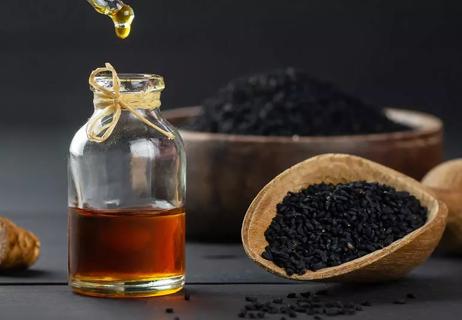
An extract from seeds produced by the fruit of an ancient plant
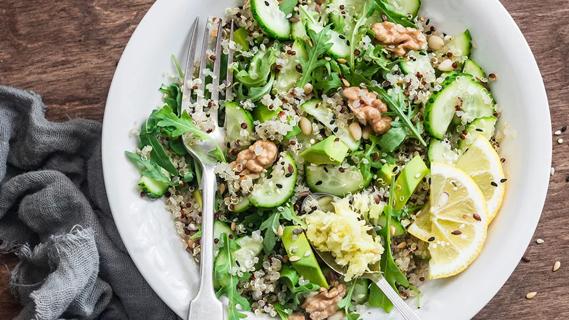
Ground flaxseed is full of heart-healthy omega-3s, antioxidants and fiber, and easy to add to just about any recipe
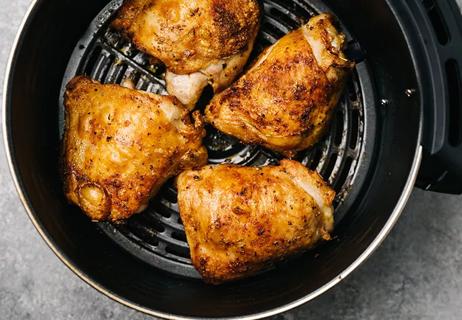
The popular cooking method can help you cut down on fat without losing the flavor and texture of your favorite foods
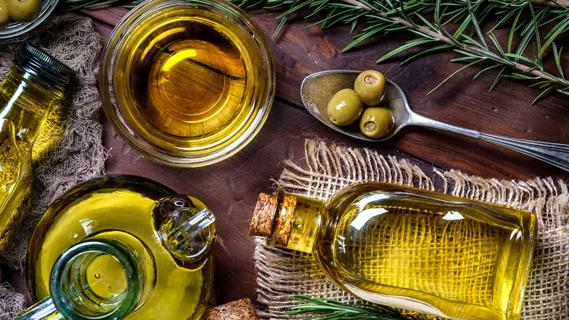
EVOO is full of antioxidants and has anti-inflammatory properties, both of which aid your body in multiple ways

Often found in ultra-processed foods, these oils can cause inflammation and diseases
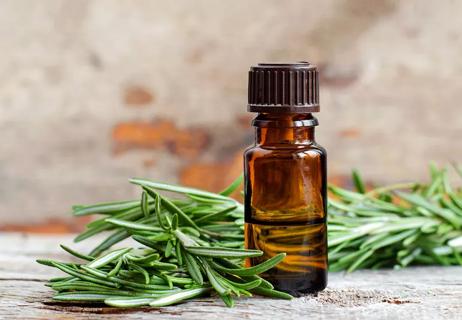
Studies show that the herby oil can lead to longer, healthier hair

These essential elements from fats, protein, carbs, vitamins and minerals help your body function properly

Why drizzling this over salad dressing or in a dip is so healthy

Type 2 diabetes isn’t inevitable with these dietary changes

Applying a hot or cold compress can help with pain